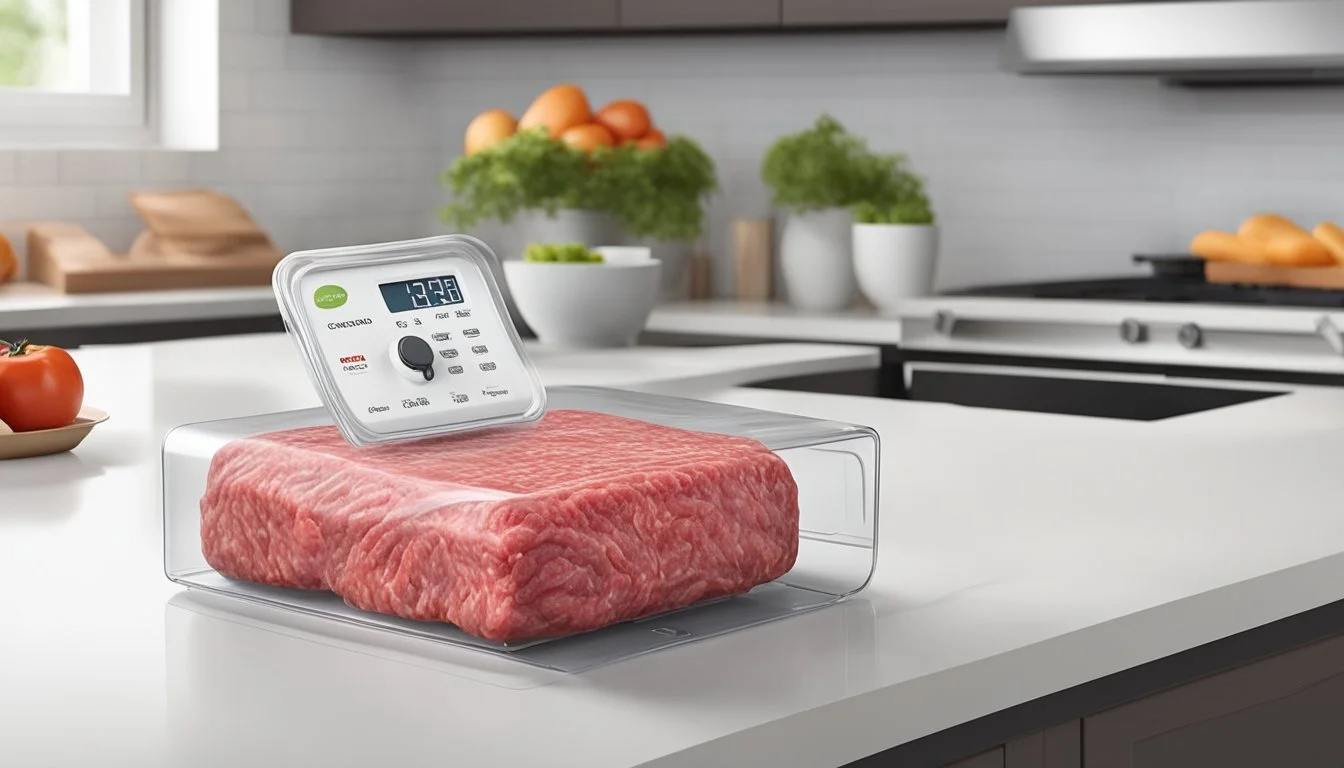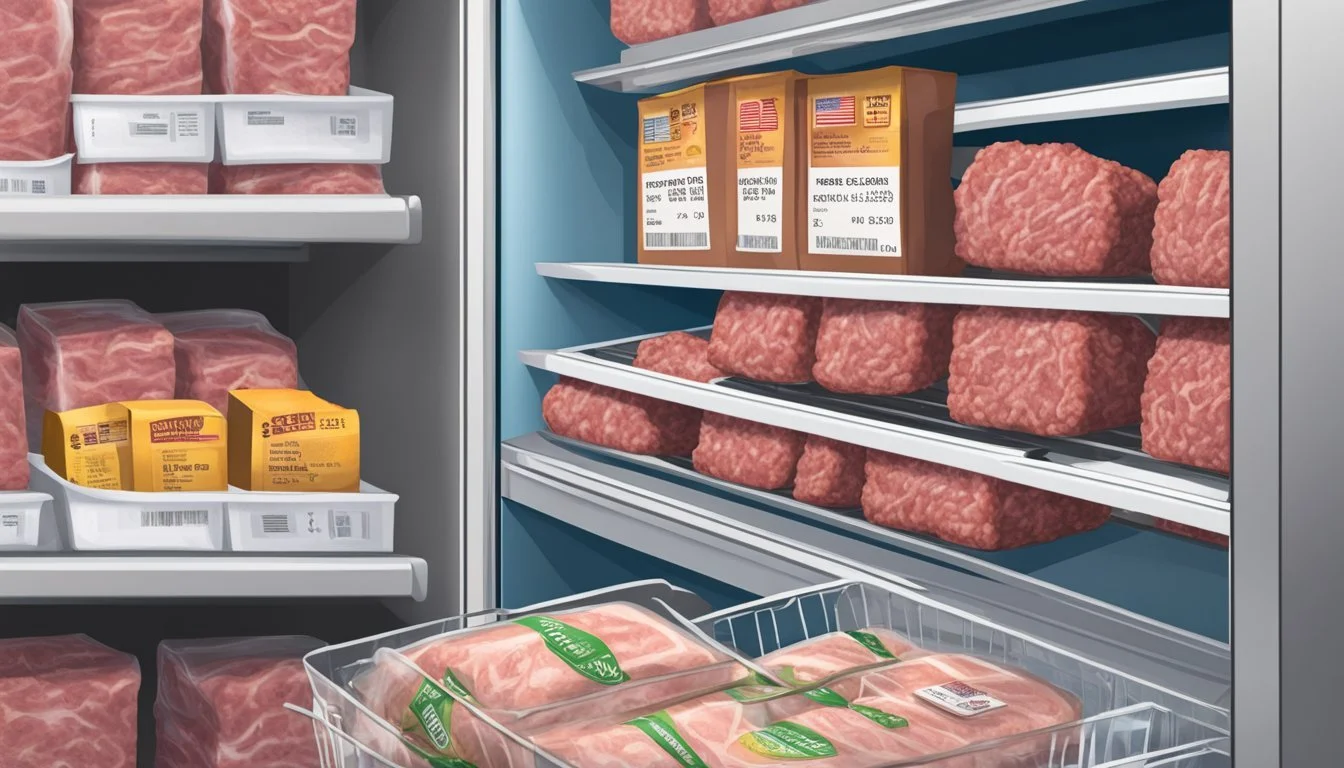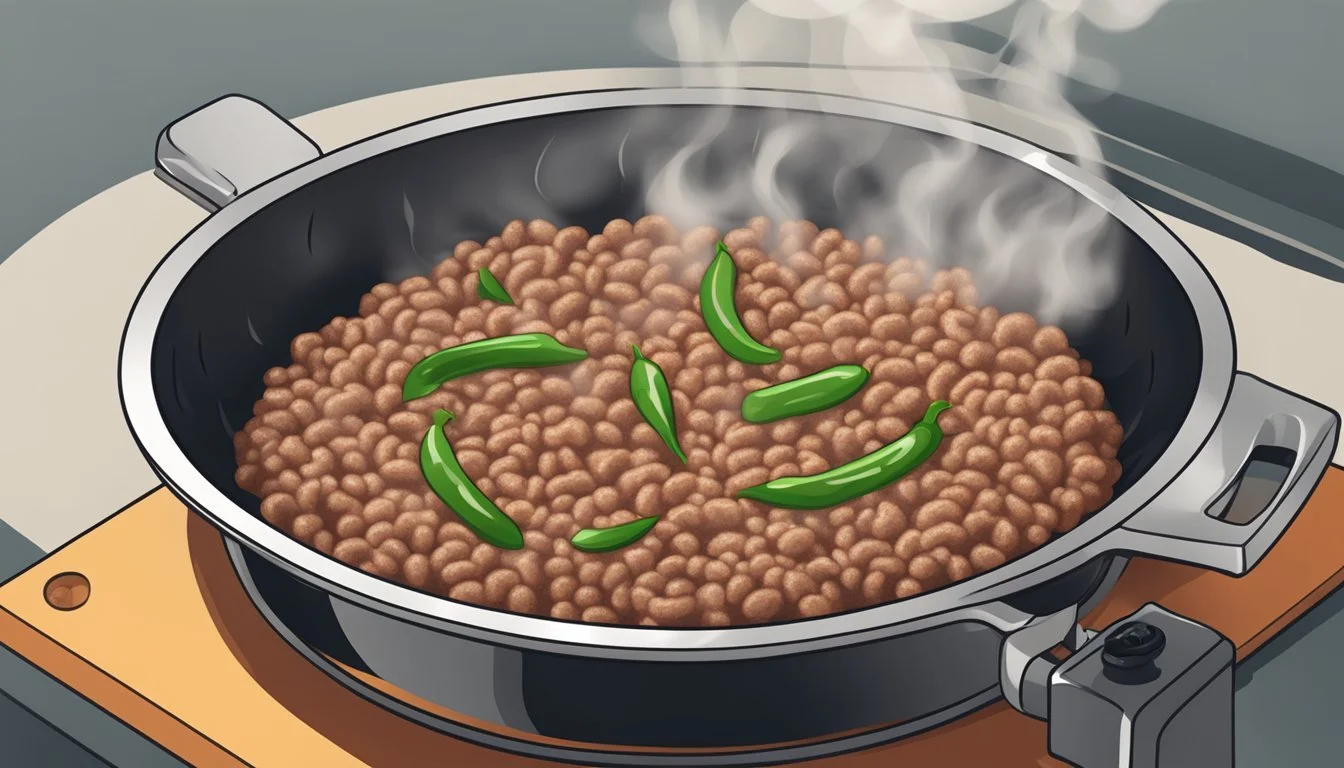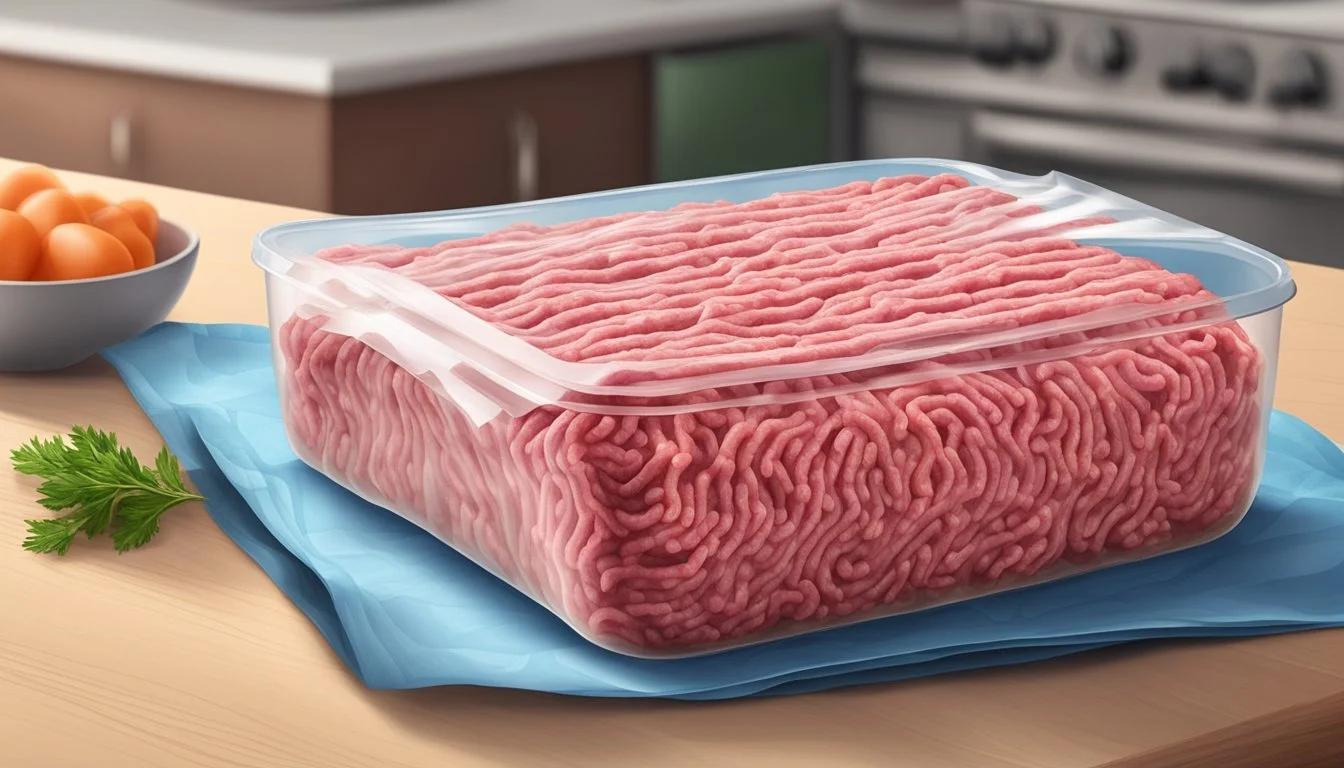How Long Does Ground Beef Last?
Shelf Life and Storage Tips
When it comes to storing ground beef, (What wine goes well with beef?) understanding its shelf life is crucial for both food safety and quality. Ground beef is a versatile ingredient in many recipes, but it is also highly perishable. Refrigeration slows down bacterial growth, which can prevent foodborne illness and maintain the freshness of the meat. According to food safety guidelines, ground beef should be used within one to two days of purchase when stored in the refrigerator at temperatures below 40°F.
For those looking to extend the shelf life of ground beef, freezing offers a practical solution. Ground beef stored at 0°F or colder can remain safe to consume for three to four months. Freezing ground beef in its original packaging, or by wrapping it further with aluminum foil or freezer paper, helps preserve its quality. Proper thawing techniques are also necessary when it's time to use the frozen meat to ensure it remains safe and flavorful for consumption.
Understanding Ground Beef
Ground beef is a versatile ingredient commonly used in numerous dishes ranging from burgers to meatloaf. It serves as a significant source of protein and comes in various types based on fat content and preparation methods.
Protein Composition
Ground beef is valued for its protein content, which is crucial for muscle growth and repair. The protein in ground beef is complete, meaning it contains all nine essential amino acids the body cannot produce on its own. A typical serving of ground beef contains:
Calories: Varies depending on fat content
Protein: Approximately 20-25 grams per 3-ounce serving
In dishes like chili or tacos, ground beef adds not only richness but also a substantial amount of protein, energizing the body and providing the building blocks needed for various bodily functions.
Ground Beef Varieties
Varieties of ground beef are distinguished by their fat percentages, affecting both flavor and usage in recipes:
Regular Ground Beef: Higher fat content, suitable for burgers and meatballs, which benefit from juiciness.
Lean Ground Beef: Less fat, often used in dishes like meatloaf or chili where additional fat may be drained.
Extra Lean Ground Beef: Minimal fat, used in recipes where low fat is preferred without compromising protein.
Each variety of ground beef should be chosen based on the desired outcome of the dish, balancing flavor, juiciness, and health considerations.
Storage Methods
Proper storage of ground beef is essential for maintaining its quality and preventing spoilage. There are two main methods: refrigeration and freezing, each requiring specific techniques to ensure the meat remains safe and flavorful.
Refrigeration Techniques
When storing ground beef in the refrigerator, one should place it at 40°F or below to prevent bacterial growth. The beef can remain in its original packaging if it will be used within one to two days. For optimal freshness, consumers may also consider transferring the ground beef to an airtight container or wrapping it in plastic wrap to minimize exposure to air.
Storage Duration: Ground beef should be used within one or two days when refrigerated.
Temperature: Keep the refrigerator at or below 40°F.
Freezing Practices
Freezing ground beef extends its shelf life considerably. Original packaging can suffice for short-term freezing, but for longer periods, it is recommended to use heavy-duty aluminum foil, freezer paper, or resealable bags to avoid freezer burn.
Wrapping: Use heavy-duty aluminum foil, freezer paper, or place the beef in an airtight container or resealable bag.
Freezer Temperature: Maintain the freezer at 0°F or below.
Shelf Life: Properly wrapped ground beef can last for three to four months in the freezer.
By following these refrigeration and freezing practices, ground beef can be stored safely, retaining its quality for future use.
Shelf Life and Spoilage Indicators
The longevity of ground beef is influenced by storage conditions and temperatures. Recognizing spoilage signs is key to ensure food safety.
Fresh Ground Beef Shelf Life
Fresh ground beef typically maintains its quality for 1-2 days in the refrigerator when stored at 40°F or below, an environment that slows bacterial growth. Vacuum-sealed ground beef in the fridge can last for 3-5 days due to its reduced exposure to air. In contrast, frozen ground beef is preserved for 3-4 months without compromising quality.
Spoilage Signs
Spoilage in ground beef is detectable through changes in:
Color: Healthy ground beef is usually bright red on the outside and brownish on the inside; any unnatural hues may indicate spoilage.
Smell: A sour or ammonia-like odor is a clear sign that the ground beef has gone bad.
Texture: Good ground beef should be firm to the touch; if it's sticky, slimy, or tacky, it's likely spoiled.
One should always inspect ground beef for these spoilage signs before consumption to avoid potential health risks from spoilage bacteria like E. coli, which proliferate rapidly between 40 and 140°F. Even if the ground beef is within the expiration date, any signs of spoilage warrant disposal for safety.
Health and Safety Concerns
When dealing with ground beef, taking precautions against bacteria and contamination is crucial to prevent foodborne illnesses. Proper handling and cooking are key methods to mitigating risks.
Bacteria and Contamination
Ground beef is susceptible to pathogenic bacteria such as E. coli, Salmonella, and other harmful bacteria that can cause serious health issues. The grinding process can spread bacteria throughout the meat. Cross-contamination can occur if raw meat comes into contact with cooked or ready-to-eat foods, surfaces, or utensils. Storing ground beef at or below 40°F and using it within two days minimizes bacterial growth.
Foodborne Illness Prevention
Cooking ground beef to a safe internal temperature of 160°F (71.1°C) ensures the destruction of harmful bacteria. It is essential to use a food thermometer to check the temperature. Safe food handling practices such as washing hands, using separate cutting boards for raw meat, and cleaning surfaces thoroughly after use can prevent the spread of bacteria and reduce the risk of food poisoning. Symptoms associated with foodborne illnesses can range from mild gastrointestinal discomfort to more serious complications such as kidney failure.
Proper preparation, storage, and cooking of ground beef are vital to maintaining food safety and protecting public health.
Freezing and Thawing Ground Beef
Proper techniques in freezing and thawing ground beef are critical for maintaining its texture and flavor, while also ensuring food safety. Ground beef can be stored effectively in a freezer, and there are recommended methods for thawing that minimize the risk of bacterial growth.
Best Freezing Techniques
When freezing ground beef, it is important to protect it from freezer burn and maintain its quality. The beef should be wrapped tightly in plastic wrap or aluminum foil, and then placed in a freezer bag, squeezing out as much air as possible. Label the bag with the current date, as ground beef is best used within four months to ensure optimal quality. When stored flat, ground beef thaws more quickly and evenly.
Freezing Steps:
Wrap ground beef in plastic wrap or aluminum foil.
Place wrapped beef in a freezer bag.
Expel excess air from the bag before sealing.
Label with the freezing date.
Lay flat in the freezer.
Thawing Safely
To defrost ground beef, one should never leave it at room temperature, as this encourages bacterial growth. Instead, it can be thawed safely using the refrigerator, a microwave if it will be cooked immediately, or by placing it in a bag submerged in cool water. If using the cool water method, ensure the water is changed every 30 minutes. After thawing in cool water or a microwave, the ground beef should be cooked immediately. Defrosting ground beef in the refrigerator is slower but it can be kept there for an additional one to two days before cooking.
Thawing Methods:
Refrigerator: Safest method, takes up to 24 hours.
Cool Water: Submerge the sealed bag in water, change water every 30 minutes, cook immediately after.
Microwave: Use the defrost setting, cook immediately after thawing.
Cooking with Ground Beef
Cooking ground beef correctly ensures both safety and flavor. It's important to familiarize oneself with various cooking techniques and the correct internal temperatures to prevent foodborne illnesses.
Cooking Techniques
Ground beef can be cooked in a variety of ways to achieve different textures and flavors. Here are common methods:
Pan-frying/Sautéing: The most common method for cooking ground beef is to pan-fry it. Cooks typically use a skillet and brown the meat over medium-high heat until it's fully cooked. Stirring the beef occasionally helps it cook evenly and develop a rich flavor.
Browning: Ground beef is often browned before being added to recipes like sauces or casseroles. A pan is heated over medium-high heat, the beef is added and then cooked until no pink color remains.
Simmering: This technique is used when ground beef is part of a liquid-based dish like chili or stew. After browning, the beef is combined with other ingredients and simmered to blend the flavors.
Internal Cooking Temperatures
To ensure ground beef is safe to eat, it must reach a sufficient internal temperature. Using a food thermometer is crucial for accuracy. Here are the guidelines:
Minimum Temperature: Ground beef should be cooked to a minimum internal temperature of 160°F (71°C). This temperature ensures that harmful bacteria are destroyed.
Checking Temperature: Insert the food thermometer into the thickest part of the meat. For ground beef, this might mean stirring the meat and testing in several places to ensure even cooking.
When ground beef is cooked to the correct temperature, one not only ensures safety but also maintains the desired flavor and quality of the cooked beef.
Ground Beef in Meals
Ground beef serves as a versatile and budget-friendly protein that enhances numerous dishes, from classic burgers to hearty chili. The key to using ground beef in meals is understanding how to incorporate it into recipes and manage leftovers to maintain quality and safety.
Incorporating Ground Beef into Recipes
Ground beef's adaptability allows it to be the star ingredient in a variety of recipes. When preparing burgers, achieving the perfect sear on the outside while ensuring the inside is cooked to a safe temperature is essential. For tacos, ground beef should be well-seasoned and browned to enhance flavor. It's recommended to brown ground beef before adding it to chili or sauce to develop a deeper taste and ensure even cooking. Meatloaf and meatballs rely on ground beef's ability to bind with other ingredients, creating a cohesive dish. While cooking these dishes:
Thoroughly cook ground beef to a minimum internal temperature of 160°F.
Drain excess fat after browning to maintain a lighter texture in dishes like sauce or tacos.
Use spices and seasonings to complement ground beef's natural flavor.
Leftovers Management
Properly handling leftovers is crucial to extend the enjoyment of meals while preventing foodborne illnesses. One should store leftovers in the refrigerator at 40°F or below within two hours of cooking. Here are some guidelines for leftover management:
Burgers: Refrigerate individually wrapped for easy reheating.
Tacos: Store seasoned ground beef separate from shells and toppings to preserve texture.
Chili, sauces, or meatloaf: Keep in airtight containers up to 3-4 days.
Meatballs: Can be frozen for later use in sauces or dishes.
Leftovers should be reheated to an internal temperature of 165°F before consuming to ensure safety. Always remember that consuming any ground beef products left in the fridge beyond their recommended storage time could increase the risk of food spoilage and potential health issues, including kidney failure in severe cases of contamination.
Labeling and Regulation
Proper labeling and adherence to regulatory guidelines are crucial for ensuring the safety and shelf-life of ground beef. The United States Department of Agriculture (USDA) sets forth specific labeling requirements and guidelines that manufacturers must follow.
Date Labels Meaning
The USDA mandates that all ground beef packaging should carry a date label, indicating the last day the product should be sold or used. Two main types of date labels are commonly found on ground beef:
Sell-by date: This date indicates how long the store should display the product for sale. It is not a safety-related date but helps consumers purchase fresh meat.
Use-by date: This date is the last day recommended for the use of the product while at peak quality as determined by the manufacturer.
It is important for consumers to understand these labels for optimal freshness and to ensure food safety.
USDA Guidelines
The USDA provides clear guidelines on the storage and handling of ground beef to prevent foodborne illnesses. Key regulations include:
Ground beef should be refrigerated or frozen promptly after purchase.
If refrigerated, it should be stored at 40°F (4.4°C) or below and used within 2 days.
If frozen, it should be done so before the use-by date and can be kept for longer periods.
By following these USDA guidelines and understanding label dates, consumers can help ensure ground beef is consumed safely.
Food Storage in the Home
Proper food storage is essential to ensure the safety and longevity of groceries, specifically ground beef. Different storage methods in the refrigerator and freezer can significantly impact the shelf life and quality of the meat.
Refrigeration Layout
In the refrigerator, one must store ground beef at 40°F or below to maintain its freshness. It should be used within one or two days after purchase if kept in the fridge. It's advisable to place ground beef on the bottom shelf to prevent any juices from contaminating other foods. For optimal storage, follow these guidelines:
Use Original Packaging: If the meat will be used soon, keep it in the packaging it came in.
Seal Properly: If the beef won't be used within two days, transfer it to airtight containers or resealable bags to prevent the spread of bacteria.
Freezer Organization
For longer storage, freezing ground beef is the way to go. When preserving ground beef in a freezer, which should be set at 0°F or below, the following steps can ensure quality and prevent freezer burn:
Wrap Adequately: Utilize heavy-duty plastic wrap, aluminum foil, freezer paper, or place the beef in a freezer-safe bag.
Label Clearly: Always label the package with the date of freezing.
Storage Duration: Ground beef can last for 3-4 months in the freezer when stored properly.
Maintaining an organized freezer is paramount, as it allows for easy accessibility and efficient use of space, ensuring that all items are appropriately rotated and used within their best quality period.
Enhancing Ground Beef Freshness
Managing the freshness of ground beef hinges on proper selection at the point of sale and assertive steps towards preserving its quality until usage.
Purchasing Fresh Ground Beef
One should verify the sell-by date or use-by date on the ground beef packaging, opting for the freshest options available. It's also advisable to inspect the beef for a bright red color on the surface, a sign of freshness, although discoloration can occur when the meat lacks contact with air. Prioritize purchasing ground beef that is cold to the touch and ensure that it is packaged securely without any punctures or excess air, which can affect quality.
Extending Freshness
Once purchased, ground beef's freshness can be prolonged through immediate refrigeration or freezing. For refrigeration:
Store at 40°F or below
Use airtight packaging or repackage if necessary
Consume within 1-2 days for optimal freshness
For freezing ground beef:
Wrap in heavy-duty aluminum foil, plastic wrap, or freezer paper
Use freezer-safe containers or bags to protect against freezer burn
Store at 0°F or below, extending quality for 3-4 months
By following these guidelines, one can significantly extend the freshness and quality of ground beef, ensuring it remains safe and flavorful for future meals.
Economic Considerations
When it comes to managing household budgets, understanding the cost implications of purchasing and storing ground beef is crucial. Consumers often consider ground beef a budget-friendly protein, especially when evaluating cost versus nutritional value.
Cost-Effectiveness
The cost-effectiveness of ground beef as a source of protein is significant. Often utilized in various dishes from burgers to casseroles, ground beef provides a versatile ingredient that satisfies dietary needs without straining finances. Shoppers may find regular discounts or sales on ground beef, which can be frozen to extend its shelf life, ensuring not just savings but also a consistent supply of protein that is ready to use.
Buying in Bulk
Purchasing ground beef in bulk can lead to direct savings. Retailers often price larger quantities of ground beef at a lower cost per unit, providing an economical advantage to the consumer. However, buyers must consider their storage capabilities, as ground beef has a limited refrigerator shelf life of 1-2 days after purchase. Freezing ground beef in meal-sized portions can keep it at peak quality for up to 3-4 months, offering both convenience and prolonged fiscal benefits.
Reheating Ground Beef
When reheating cooked ground beef, it is crucial to maintain safety and prevent quality deterioration. The objective is to reach a safe internal temperature while preserving the beef's texture and flavor.
Reheating Best Practices
Microwave Method:
Place the cooked ground beef on a microwave-safe dish.
Sprinkle a little water or sauce to keep the meat moist.
Cover the dish with a lid to promote even heating.
Heat on medium for short intervals, checking the temperature regularly.
Ensure the internal temperature reaches 165°F (74°C) before consumption.
Oven Method:
Preheat the oven to 350°F (175°C).
Line a baking sheet with parchment paper or foil.
Spread the ground beef on the sheet.
Reheat for 15-20 minutes, or until the internal temperature is 165°F (74°C).
Use a food thermometer to verify proper reheating.
Avoiding Quality Loss
Texture and moisture conservation:
Avoid overcooking by reheating only until it reaches the recommended temperature.
Adding a small amount of water or broth can retain moisture.
Uniform Heating:
Stir or turn the beef halfway through reheating in a microwave.
For oven reheating, ensure that the layer of beef is even on the baking sheet.
By following these steps, one can safely reheat cooked ground beef while preserving its quality.
Ground Beef Safety
Ensuring safety when handling ground beef is crucial to prevent foodborne illness. This section will detail specific practices related to avoiding cross-contamination and cooking ground beef to safe temperatures.
Avoiding Cross-Containation
They must store ground beef separately from other foods, particularly ready-to-eat items, to prevent cross-contamination. It is recommended to use separate cutting boards and utensils for raw meat and other foods. After handling ground beef, thorough washing of hands, surfaces, and utensils with hot, soapy water is essential.
Storage: Refrigerate ground beef at 40°F or below.
Utensils: Use separate sets for raw meat and other foods.
Surfaces: Clean surfaces immediately after use to remove any potential contaminants.
Cooking to Safe Temperatures
To ensure all harmful bacteria are eliminated, ground beef should be cooked to a safe internal temperature of 160°F (71.1°C). A food thermometer should be used to verify this temperature, as color and texture are not reliable indicators of doneness.
Doneness Temperature Safe Minimum 160°F (71.1°C)
When cooking dishes such as meatloaf, meatballs, and hamburgers, it's critical to measure the temperature in the thickest portion of the meat. Ground beef should never be eaten raw or undercooked due to the increased risk of foodborne illnesses.
Maximizing Ground Beef Value
Consumers can enhance the value of ground beef by implementing cost-saving measures and reducing waste. These methodologies interplay to extend the shelf life of ground beef, a budget-friendly protein, ensuring it remains safe to consume and of good quality.
Cost Savings Tips
Purchase in Bulk: Consumers can save money by purchasing ground beef in larger quantities. This approach leverages the lower cost-per-pound associated with bulk purchases.
Freeze Effectively: To preserve quality, store ground beef in the freezer using heavy-duty freezer bags or airtight containers. Frozen ground beef maintains its quality for up to 3-4 months.
Monitor Sales: Buyers should keep an eye out for sales on ground beef at local supermarkets and plan purchases accordingly to take advantage of lower prices.
Use Membership Clubs: Individuals can join membership clubs or wholesale retailers where ground beef is often available at discount prices when compared to standard grocery stores.
Waste Reduction Strategies
Proper Storage: Ground beef should be refrigerated at or below 40°F immediately after purchase to slow the growth of bacteria. The refrigerator shelf life is 1-2 days for raw ground beef.
Prompt Freezing: If ground beef is not to be used within 1-2 days of purchase, promptly freeze it to extend its shelf life and prevent spoilage.
Portion Control: When freezing ground beef, divide it into meal-size portions. This method minimizes waste, as consumers can defrost only the amount needed for a meal.
Cooked Ground Beef Storage: After cooking, ground beef can be stored in the refrigerator for 3-4 days, offering flexibility for future meals and reducing the need to discard leftovers.
By following these tips and strategies, consumers can manage their budgets more efficiently and enjoy the value that ground beef provides without unnecessary waste.








